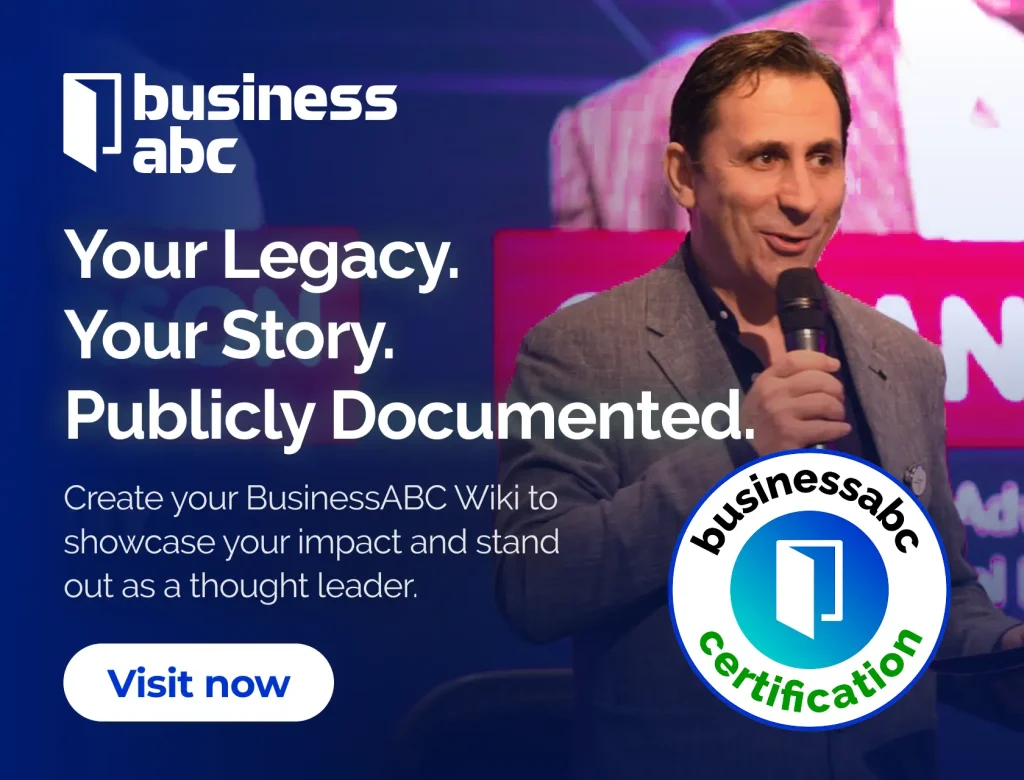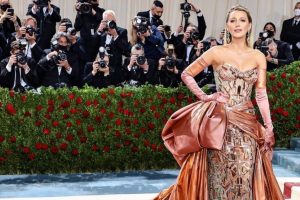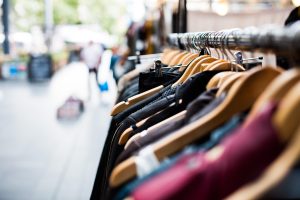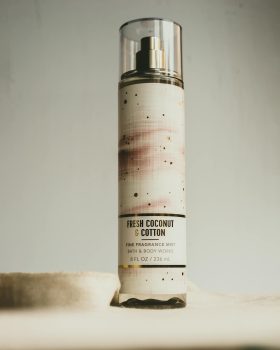Sports giant Nike shares candid athlete interviews and behind-the-scenes glimpses at performance products. From NIKE’s new President and CEO Elliot Hill to Innovative Solutions to American Paralympian Tatyana McFadden and Nike Swoosh Bra, here are the 10 Nike Stories that stood out this year.

NIKE’s new President and CEO Elliot Hill
Nike is a global leader in athletic footwear, apparel, and equipment, recognised worldwide for its innovative approach to sportswear and its iconic “Swoosh” logo. Founded in 1964, Nike has grown to become a symbol of performance, style, and ambition, catering to professional athletes and casual wearers.
The athletic brand is celebrated for pushing the boundaries of technology with products like Nike Air, Flyknit, and Dri-FIT, enhancing athletic performance and comfort. With a commitment to empowering athletes, Nike also promotes social responsibility and sustainability, striving to make positive impacts both within and beyond the sports community. Let’s take a look at some of the athlete and product design team stories that stood out in 2024.
NIKE President and CEO Elliot Hill
Nike spent more than 50 years powering sports, shaping culture, and breaking barriers through its iconic innovation, storytelling and athletes. To help launch the company into its next 50, Elliott Hill stepped in as the new President and CEO of NIKE, Inc. in October.
“We will put the athlete* at the center of everything we do,” he says on Nike’s website. “We’re a company of dreamers, optimists, and inventors, and our eyes are on the future — we’re going to simplify and go.”
Kicking off his 33rd year at the brand, Hill shares his rich experiences at Nike. “One of my most memorable Nike moments was the first time I flew out to Portland, Oregon, in 1990, for a sales meeting downtown on the waterfront. We go outside for the opening and there’s a brand heat video on that was blowing people’s minds. The folks around me were going nuts. The video kept building, and I realize we’re seeing the “Just Do It” ad campaign being screened for the first time, right in front of us. I thought, “I am in the middle of something I never imagined I was going to be a part of.”
“I think we have one of the most beautiful, simple and aspirational mission statements that exists. “To bring inspiration and innovation to every athlete* in the world. It is Nike’s responsibility to inspire the world through sports, athletes and teams and the greatness that they try to achieve every day. It’s also our role to create the most innovative, coveted, beautiful, mind-blowing products and stories… I believe what makes Nike great is our unrelenting focus on our athletes, the relationship we have with them, and our ability to take their insights to drive innovation, whether it’s products or storytelling. That’s what propels Nike forward. When we put athletes* at the center, we create the right discussions, debate, dialogue, and ultimately arrive at the best decisions — for consumers and our company.”
“I’ve been fortunate throughout my career to experience some incredible, iconic Nike sports moments. I got a lot of ’em flashing through my head. Michael Johnson and Atlanta, winning the gold in gold spikes. Cathy Freeman and the Sydney Olympics, running in the Nike Speed Suit with the weight of the country on her shoulders and winning the gold medal. Mo Farah in London winning gold in that Nike Volt Green. If there was one Nike moment that I wish I could have experienced, it’d be Steve Prefontaine running for gold. His quote, “To give anything less than your best is to sacrifice the gift” is what will be hanging over my new desk.”
Count Eliud Kipchoge on Zoom Fly 6
Behind every Nike Running is a team of design experts and athletes, trading feedback over concepts, prototypes and samples. Count Eliud Kipchoge, the world’s greatest marathoner, is one of the experts. The Kenyan marathoner is synonymous with the Vaporfly and the Alphafly, Nike’s racing products. In reality, Kipchoge uses different shoes during training for different workouts: long runs, fartleks, hills, and more. He doesn’t just need a super shoe. He needs a super trainer, a shoe that borrows traditional components from racing footwear, like carbon fiber plates and unique midsole geometries, and translates them into a more durable shoe for year-round training.
The Zoom Fly 6 is Eliud’s latest addition to his training gear for the days when he needs to push the pace. According to Elliott Heath, Sr. Expert of Running Footwear at Nike, Eliud’s product knowledge borders on the professional. “We’ve started to call Eliud our Product Line Manager on the ground,” says Heath on Nike’s website. “He’s doing hand sketches and writing dedicated notes about our prototypes — That’s his baseline. Over the last couple years, he’s gone to the next level of building feedback sheets, giving them to his running camp teammates and asking them to give their own notes. He’s the world’s best marathoner, but he actually feels like a member of our product team.”
“Eliud’s commitment to testing our shoes is a testament to how we partner with athletes all the time, not just on race day,” says Heath. “What you do in a race is 5 percent of your running journey. Anyone who’s racing marathons is spending 95 percent of their time in other shoes, gritting their teeth through the easy and hard miles that aren’t glamorous. Anytime an athlete wants us to be a part of their 95 percent as well as their 5 percent on race day, that’s when we have the real potential to better serve our runners.”
In the past, Eliud has incorporated the Zoom Fly into his rotation, especially the 5, which was a perfect trainer for his easy Monday runs; he’ll step outside his front door and go anywhere from 12 to 18 miles. When he tested the 6, he immediately noticed the lighter weight and more comfortable upper, both of which he relayed to Heath in his soft-spoken, methodical manner. He’s willing to give constructive feedback, too, but always graciously, such as when he recommended adding a slightly more durable material along the outsole, helping the shoe better withstand a rigorous training schedule. “It’s worth giving a thought,” he scribbled in his notes.
Eliud’s notes help ensure that every Nike silhouette serves a distinct purpose. No one’s as qualified to give that precise, attuned feedback as the greatest marathoner of all time.
How Faith Kipyegon Empowers Women Runners

Faith Kipyegon
Faith Kipyegon is the only runner to win three back-to-back gold medals in the 1,500m. When she was sixteen, Faith began competing in the junior division of Kenyan National Cross Country Championships, a six-km sprint over rough, hilly terrain. “I took one look at the texture of the grass, how soft it was, and I told my coach ‘I’m not going to use my spikes today. I’m going to win barefoot,’” she says on Nike’s website. And she did.
Faith Kipyegon, now 30, secured her place in track lore as the only runner to win three back-to-back gold medals in the 1,500 meter, in Paris. Her 2023 campaign, when she set world records in the 1,500m, the mile, and the 5,000m, is considered one of the greatest individual seasons in the history of track and field.
“When young runners from the next generation watch me compete, I want them to see freedom — the freedom to challenge themselves in new ways,” she says. “Motherhood gives me life as a runner. I’ve gotten extra energy from being a mother to Alyn. She sees how committed I am, how hard I work. During the season, she understands that I go to training camp from Monday to Saturday, and then I go back home, only to spend one day with her. It’s really not easy, but she understands the sacrifices I’m making. She motivates me to work as hard as I can. I talk to my daughter before every race.”
Bringing Innovative Solutions to Italian fencer Bebe Vio
Listening to all athletes means internalising the most specific of needs and creating singular solutions to meet them. Two Nike athletes, Italian fencer Bebe Vio and American Paralympian Tatyana McFadden needed specific product solutions ahead of Paris to give them an edge in the competition.
For Bebe, the symbiosis between her body and her prosthetic forearm had been a perfect pairing. But a pain in her arm was growing so unbearable, after competitions, Bebe would need to take two-week breaks to recover before returning to training. Doctors told her she might need to stop fencing altogether.
The world champion fencer had visited Nike during a 2022 cohort gathering for Athlete Think Tank to talk about how Nike can serve women more completely. A conversation between her and Tobie Hatfield, Sr. Director for Nike’s NXT Space innovation team, was where Bebe opened up about the problem and Hatfield knew his team was uniquely suited to help.
In Bebe’s chosen discipline of foil fencing, vibrations that were generated by foil on foil contact during competition and in training were shooting up Bebe’s prosthetic and into her arm, causing sharp, acute pain. The next goal was to reduce the foil vibrations reaching Bebe. “When we began problem-solving, we didn’t set out to make a completely new prosthetic,” says Browning on Nike’s website. “It was important to adapt whatever we made to work with Bebe’s existing equipment, so she didn’t need to make too many changes all at once.” Behind the hilt of the foil, however, where there would be a handle, Bebe was allowed a custom connector to join her fencing prosthesis to her foil. That customisation is what enables her to fence with a forearm prosthesis.
Fanny Ho on The Nike Swoosh Bra

Fanny Ho
Mothers are the ultimate athletes. They need the right tools that work as hard as they do, including their sports bras. That sense of pointed urgency compelled Nike designers to create the Nike Swoosh Bra, an innovation. Fanny Ho, Senior Manager in Design Innovation talked to both elite athletes and everyday moms about the features they wanted in a performance nursing bra.
Wearing a traditional nursing bra compromises a mother’s ability to move, especially if she’s pumping, and the force of movement and the weight of a wearable pump can be too much for a typical bra’s nursing clips. “If she’s doing a lunge, that little piece of plastic on the strap is going to snap,” says Ho on Nike’s website. The team knew that they had to reimagine the nursing bra’s hardware design, and they collaborated with Nike engineering partners to create something better.
The Nike Swoosh bra’s patented hardware — the two pieces that attach together on the bra strap — is specifically engineered to support the weight of wearable breast pumps plus the forces of any movement. The hardware unclips for quick access to nursing, and the webbing strap on the front of the bra can be pulled to adjust the volume of the cups. This plus the bra’s adjustable back strap to accommodate an expanding rib cage ensures the piece fits throughout pregnancy and beyond.
“I have never worked harder on a project,” she says on Nike’s website. “We just knew, from all the women that we talked to — they needed this yesterday.” The result is more than a next-level performance nursing bra, Ho adds. It’s the feeling of empowerment. “With this bra, we want to empower women to say, ‘Here I am — I’m pumping, I’m moving, I’m proud to be a mom, I’m proud to be an athlete, and I can be both at the same time.’”
Bringing Innovative Solutions to American Paralympian Tatyana McFadden
Powering her wheelchair through the final meters of the Women’s T54 Marathon, Nike athlete and six-time Paralympian Tatyana McFadden crossed the finish line in fifth place. Tatyana’s gloves in which she’d glued strips of sandpaper to improve their traction in the wet conditions kept slipping. To achieve her athletic potential, she needed a better solution. Engineers and designers on the Nike innovation team knew they could help.
“We knew we needed better traction from her hand to her glove and also for the pad of the glove to the rim of the wheel, so that it didn’t slip. The whole thing also needed to weigh less and be in a customised shape for the best-possible comfort for her repetitive use over 26 miles.” Eunice Lee, Ph.D., Principal Materials Innovator says on Nike’s website.
Using Tatyana’s wheelchair wheel and rim, the Nike team created a robot that uses the same motion with the same force Tatyana uses. From materials like TPU, nylon and yoga mat foam that were hard, soft, cushy, and sticky, the team tested hundreds of different combinations to find the best combination of material and surface traction.
“We used the exact wheel that Tatyana used, and with our robot, tested hundreds of computational designs with traction patterns inspired by nature and Nike rubber outsoles, in wet and dry conditions,” Lee says. The team was searching for the ideal combination of material and traction that would provide the most comfort and durability for Tatyana throughout a race. And achieved the goal.
NBA Player Victor Wembanyama offers advice

Victor Wembanyama
Five games into his professional career, on his third straight road game, Victor Wembanyama was at home in the NBA. He scored thirty-eight points, grabbed ten boards and put up two blocks by the end of the night. At season’s end, he’d average nearly four blocks a game, leading the league.
The twenty-year-old 7’4” frame swallows every square inch of the court. Offensively, he’s fluid and mobile. Defensively, he’s a one-man zone. “Wearing the France national jersey is one of the strongest feelings I know. In the NBA, I’m attached to the city of San Antonio. I’m a part of it. They’ve welcomed me,” he says on Nike’s website.
“Here’s what I’d tell any kid who’s struggling with something: My coach told me, ‘When you’re a professional, you’ll be working on the present. But right now, you’re working for the future.” At the end of the day, it’s on the players to define what their goals are in life, what they want to become.
“I want to help create a new era of dominance for French basketball. That involves promoting the sport and making it more popular in the country for our youth. For professional basketball in France, I think our potential doesn’t match our current investment. How can we improve our facilities? How can we train the best staff? We just need to match our potential and foster our pool of talent that’s already here. France has the brightest future of any country in the world for basketball.”
Sabrina Ionescu on the Magic of the Game Winner
In Sabrina Ionescu’s career, the question was not if the game-winning shot will happen, but how. There was the 2017 game-winner as a college freshman against Cal, nicknamed “the Heave at Haas,” when Ionescu made a direct line past half court, caught the inbounds pass on the run, and sank a three-pointer at the buzzer.
In 2021, in the guard’s season-opener with the New York Liberty, she curled around a dribble hand-off on the left wing, caught the ball at her hip, and in one motion, rose up for a game-winning three to defeat the Indiana Fever. Then there’s the shot heard ‘round the world: Game 3 of the 2024 Finals, where she silenced nearly 20,000 fans in Minneapolis with a three-point dagger from 28 feet.
“We had enough time on the clock that we were able to slow down and read the defence,” she says on Nike’s website. “We knew we were sending up Jonquel Jones for a ghost screen and then have her slip out to create some confusion. And then, after reacting how they played me, it just became me and the basket — I had enough space after that step back to get my shot off.”
Every game-winning shot is special, says Sabrina. “You miss more of those attempts than you make, so you hold onto every game-winning moment when they happen.”
Richard Ramsay On Nike Elite EasyOn Backpack

Richard Ramsay
When Richard Ramsay was a basketball-obsessed teenager, he remembers how his dad would help him retie his shoelaces. Ramsay was born without his left arm, and while his disability didn’t stop him from excelling in basketball and football, the challenge to complete tasks like retying a shoelace was real.
He’d go on to study kinesiology at university, compete on his program’s basketball practice squad, and graduate into a footwear creation career at Nike, where he eventually joined the Universal Ease team in creating more accessible performance products. In 2022, Nike Lead Equipment Designer Brent Radewald met with Ramsay, now a Senior Footwear Developer, to show him a prototype of a new backpack developed for the brand’s Paralympic athletes ahead of Paris 2024. The goal: take maybe the most purely functional piece of equipment that exists, the backpack, and make it easy for all athletes to use.
“A comment we were frequently hearing from adaptive athletes was how difficult it was to open and close traditional backpacks without a high-dexterity anchor point, like a hand,” says Radewald on Nike’s website. “If they don’t have full use of both hands, small features like zippers and pull tags can be hard to grip.”
The first step for Radewald’s team was to rethink the traditional opening system. Eventually, the team landed on a patented magnetic closure system that was backed against a TPU-reinforced lining, using the magnetic pull to “swing” the top flap shut and secure it in place.
“Magnets and hooks and loops have different strengths based on the direction of the opening force, says Radewald. “Magnets have great vertical power in keeping something tight up and down, but they don’t hold up as well to shearing forces, side to side. Hook and loops have nice shearing strength, but less vertical strength. If there was some combination of those elements that we put together, we might have something special.”
The iconic Nike A.I.R.
On the second floor of the LeBron James Innovation building in Beaverton, Ore., Nike designers huddled around a table studying a 3D-printed shoe prototype for Victor Wembanyama’s size 21 foot. The design studio in the LeBron James Innovation Building has been the incubator for A.I.R. — Athlete Imagined Revolution — a new co-creation process between teams of Nike designers and innovators and 13 of the brand’s elite athletes. Perhaps no project in Nike’s history has united so many next-gen disciplines to create a new working process among designers, athletes and technology.
“For these prototypes to be successful, they must stir emotions,” says John Hoke, Nike, Chief Innovation Officer on Nike’s website. “They must evoke a sense of awe for what lies just beyond the horizon, an optimism for the future. What I really hope this project stirs up is a sense of unlimited potential. Nike Air is a nearly 50-year-young technology. We’re only at the cusp of harnessing Air’s potential, its full expression. And these footwear prototypes show we’re nowhere near done.”
“AI exponentially increases our creative process,” says Chen. “Creating these starting points used to take us months to do. Now, we can create them in seconds. We liken AI to a sharper, more intelligent pencil. The designer is still in control. It’s what you do with the pencil that creates the magic. We gave these generative programs entire worlds to reflect back to us, and they did that. But that doesn’t happen without the thorough listening sessions our teams conducted with our athletes.”
After taking stock of the hundreds of AI visuals, the teams design to the exact specifications of championship athletes. The 13 teams used the forms, textures, generative figures, and even the entire worlds of the AI images as inspiration to zero in on three radical shoe concepts that manifested a new expression of Air, which was easier said than done. In some cases, designers had to work against the bias of the AI algorithms to create homogenised concepts surrounding Air.
After designers land on the three concepts, now comes the ultimate feedback — the athletes’ assessments. Every detail of the concepts was discussed, including features they’d like considered for aesthetic, functional or expressive reasons. When Chen and the design team were listening to feedback from 100-meter champion Sha’Carri Richardson on her concepts, a descriptive word she used for her design hung in the air: graceful. “When you think of Sha’Carri, you think of strength, power and determination,” says Chen. But when the design team talked to Sha’Carri about her concepts, she told the designers she didn’t want a spike that looked like a battle sandal. “Her dream was for her foot to have this oneness, this harmony with the plate construction of the spike, which is why we focused on the underfoot unit beautifully blending into the upper and up the leg sleeve,” Chen says.
Read More:
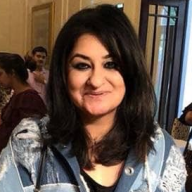
Jasmeen Dugal is Associate Editor at FashionABC, contributing her insights on fashion, technology, and sustainability. She brings with herself more than two decades of editorial experience, working for national newspapers and luxury magazines in India.
Jasmeen Dugal has worked with exchange4media as a senior writer contributing articles on the country’s advertising and marketing movements, and then with Condenast India as Net Editor where she helmed Vogue India’s official website in terms of design, layout and daily content. Besides this, she is also an entrepreneur running her own luxury portal, Explosivefashion, which highlights the latest in luxury fashion and hospitality.





